The field of machine learning (ML) has been developing and expanding since the 1960s, and now we encounter its implementations daily in more than 50 industries. After the AI breakthrough, the demand for ML and AI specialists naturally increased, so many programmers aspire to obtain the required skills and knowledge. However, it can be rather complicated for beginners as there are many technologies and programming languages used in ML.
It’s best for beginners to focus on mastering one language first instead of dispersing their attention to a few variants. In this article, we’ll help out you with the choice by answering the question “What is the best programming language for machine learning?”. Read our analysis and descriptions for a better understanding of the best machine learning languages.
Best programming languages for machine learning in 2023
| Name | OS | Programming paradigm | Typing system | Frameworks for ML | IDEs best for ML |
|---|---|---|---|---|---|
| Python | Windows, macOS, Linux/UNIX, Android, and others | Multi-paradigm | Dynamic, strong | TensorFlow, Keras, PyTorch, Scikit-Learn, Theano, MXNet, Pandas, NumPy, Spark ML | Google Colaboratory, PyCharm, VS Code, Atom, Jupyter, Spyder, Thonny |
| R | Cross-platform | Multi-paradigm | Dynamic, weak | Rpart, data.table, SuperML R, Caret, e1071, xgboost, randomForest packages | RStudio by Posit, JupyterLab, RTVS, Eclipse StatET, PyCharm |
| C# | Common Language Infrastructure | Multi-paradigm | Strong, static | ML.NET, TensorFlowSharp | Visual Studio, Rider IDE, SlickEdit, MonoDevelop, Scriptcs, DevExpress |
| C++ | Cross-platform | Multi-paradigm | Strong, static | TensorFlow, Caffe, mlpack Library, SHARK Library, Armadillo, Faisis, Open NN, Shogun | Visual Studio, Code::Blocks, CLion, Eclipse CDT, CodeLite, Apache NetBeans, Dev C++, C++ Builder |
| Julia | Linux, macOS, Windows, FreeBSD | Multi-paradigm | Dynamic | Flux, Mocha.jl, Knet, TensorFlow.js, ScikitLearn.j, MLBase.jl | VS Code, Juno, Jupyter, Emacs, Vim, Sublime Text |
| Haskell | Cross-platform | Purely functional | Static | TensorFlow-Haskell | VS Code(with Haskell extensions), IntelliJ(plugin); Leksah, Vim, Emacs, Atom, Haskell for Mac, Sublime-Haskell |
| Java | Cross-platform | Multi-paradigm | Static, strong | JavaML, ADAMS, Eclipse Deeplerarning4j, Weka, Apache Mahout | IntelliJ IDEA, Eclipse, Apache NetBeans, BlueJ, Sublime Text |
| Scala | Cross-platform | Multi-paradigm | Strong, static | Apache Spark MLlib & ML, Apache PredictionIO, Conjecture, Deeplearning.scala | Scala IDE for Eclipse; IntelliJ IDEA (Scala plugin), iRender |
| JavaScript | Cross-platform | Multi-paradigm | Dynamic, weak | Synaptic, Drain.js, TensorFlow.js, ML5.js, Keras.Js, ConvNetJS, math.js, OpenCV.js | IntelliJ IDEA, WebStorm, Sublime Text, Apache NetBeans |
| Go | Linux, macOS, Windows, DragonFly BSD, FreeBSD, NetBSD, OpenBSD, Plan 9, Solaris | Multi-paradigm | Static, strong | GoLearn, Gorgonia, goml, eaopt, Evo, goga, gogl, GoMind | Go IDE by JetBrains, Atom with Go-plus, GoSublime, Vim-go, LitelIDE |
| Wolfram | Cross-platform | Multi-paradigm | Dynamic, strong | WDF, QuantumFramework | Wolfram Mathematica, Wolfram Workbench (Eclipse-based), IntelliJ IDE(plugin) |
| MatLab | Windows, macOS, Linux | Multi-paradigm | Dynamic, weak | DeepLearnToolbox by Mathworks, mlUnit, machine-learning-matlab | MatLab Editor, IntelliJ IDEA (MatLab plugin), Vim (MatLab plugin) |
12 best languages for machine learning
We compiled a list of top machine learning languages in 2023 that you should start exploring if you want to become an expert in the ML industry. Here you’ll find comprehensive descriptions with essential characteristics.
Python – the top machine learning language
Among programming languages for machine learning, Python is often the top choice. It’s basically a requirement to know it if you want to get a job in the ML sphere. Of course, there are valid reasons for such a demand making it practically an industry standard. Let’s answer the question “Why is Python good for machine learning?”.
Python is currently the most widely used programming language among data scientists. According to research from House of Bots, the language is used by 57% of data scientists and developers working in the ML field. Its high level of popularity is largely attributed to its adaptability and facilitated usage.
Another reason for the boom of Python usage is rich resources. This best language for machine learning comes along with a vast number of libraries and frameworks that facilitate the processes of writing algorithms and training ML models. Developers can save time by using specialized libraries for machine learning, like those from our table above, instead of writing code from scratch. It also has a robust and active network of supporters who continuously grow its assortment of resources.
The Python Package Index is also of great use in finding resources for Python machine learning as there are dozens of libraries of code, many of which were made with machine learning in mind. TensorFlow makes it easy for both learners and specialists to train ML algorithms.
Although Python is not the fastest language to use, it has another beneficial feature making it more favorable for ML programmers which is less code. Overall, Python utilizes a lot less code than the majority of OOP languages. This is useful for machine learning, a discipline that employs numerous algorithms. With little code, it can implement even the most complicated logic. Just look at the comparison of Python with Java.
Java
public class Hello {
public static void main(String[] args) {
System.out.println("Hello World!");
}
}
Python
print('Hello World!')
Overall, many ML coders now consider Python the best programming language for machine learning. They might personally prefer and use other languages, that also have many advantageous features, which we’ll describe further in the article, but Python is still a must-have for professionals in the ML field.
We offer impeccable expertise and a wide range of efficient solutions for your business development
R language
R for machine learning is a popular option as it allows fast and high-quality processing of datasets. It is a well-known open-source data visualization-driven language for statistical computation and machine learning. Statistical and functional characteristics of R define it as a dynamic, imperative, and functional language.
Because R is simpler to learn than other programming languages, it is used by analysts, statisticians, and data miners. Of course, it includes several tools for creating machine learning applications. A large number of R packages, which now exceeds 12.000, allows ML specialists to use the language’s full potential for creating machine learning models.
Among the machine learning algorithms, R is the most frequently used to implement Representational State Machines (RSMs) for classification, regression analysis, and decision tree construction.
In a discussion of R vs Python for machine learning, the first one gets to win when it comes to apps that require statistical analysis, especially if it's big data that needs to be processed.
C#
C# for machine learning isn’t the first language that comes to mind. Even if it’s extremely popular for creating many kinds of applications, not everyone chooses it for ML. However, it offers no fewer capabilities than any other of the top ML languages, especially for beginners.
A.NET Core machine learning framework called ML.NET allows C# to be utilized for machine learning applications.
Without prior experience in creating or configuring machine learning models, .NET developers can easily use ML.NET to create their own models and incorporate unique machine learning into their applications. ML.NET also includes essential elements, such as learning algorithms, transformations, and ML data structures, as well as the first draft of .NET APIs for training models and using models to make predictions.
While C# has some gaps in resources and lacks libraries for ML in comparison with Python, there is always an ability to port Python code sources into C# with the help of wrappers and porters like SciSharp or others. However, professionals admit that Python still prevails in their choices compared with C#, which is great for learning ML programming.
C++
For understandable reasons, C++ is one of the best languages for machine learning among other options. It is a high-level, object-oriented language and it makes it possible for programmers to create portable programs incredibly quickly. Additionally, it has extensive library support, making many functions accessible. As for now, 61.5% of the TensorFlow codebase is C++. Of course, not all of those source codes are related to machine learning coding since C++ is a rather general-purpose programming language but these statistics just show the extent of possible resources.
This machine learning language offers fundamental features to frameworks and provides its own ML libraries for native C++ ML model development.
When it comes to speed, C++ also has major benefits over the best machine learning language, Python. Although the latter is easier and faster to write and debug, the first one wins in terms of performance speed. Due to its accelerated speed with hardware-lever features, C++ machine learning algorithms are often used for technologies that require fast performance, for example, IoT development.
Just like other top-rate languages for machine learning, C++ saves the time and money that would’ve been required to write code from scratch by enabling code reuse throughout development. Unfortunately, it multitasks pretty insufficiently, making it only useful for the creation of fundamental systems or algorithms.
Julia
Popular high-level, dynamic programming language Julia is used for creating machine learning applications with a model analytics focus. Because of its straightforward syntax and great efficiency, it is sometimes even predicted to become the main competitor to the aforementioned favored languages for machine learning, Python and R. Since it works well on many platforms, interactivity is regarded as a helpful characteristic while building scripts for this language. Julia language also provides exceptional accuracy with numbers since it’s designed for scientific computing queries and basic mathematics implementation, has a powerful compiler and a large collection of mathematical functions. Thus, it is a great tool for numerical analysis and computational statistics making it very well-liked among statisticians and data analysts.
Julia is also recognized for its scalability opportunities and universal executability. ML apps in Julia can be easily scaled by deploying code in large clusters. Plus, with the help of wrappers like RCall or PyCall, you can comply R or Python-based ML apps in Julia.
Haskell
Haskell is a strong, static typing programming language for machine learning which provides support for embedded domain-specific languages essential for AI research. It makes use of standard algebraic building blocks like monoids and modules to make machine learning algorithms more effective. Haskell is excellent for abstract mathematics and produces very expressive algorithms while also delivering great speed.
While being a functional language, it has distinguishing qualities that make it perfect for machine learning. The consensus among programmers is that machine learning is best served by a programming model that emphasizes mathematical functions and logic.
Similarly to Python, functional languages like Haskell utilize less code while maintaining consistency, which leads to improved efficiency and more simple maintenance. This is a crucial characteristic because machine learning often involves large numbers of matrix multiplications.
// HelloWorld.hs
main :: IO ()
main = putStrLn "Hello World"
Despite its obvious advantages, Haskell doesn’t have as much support as other top machine learning languages from the ML community and extensive resources. Nevertheless, many research and commercial organizations still utilize it for their machine learning algorithms. One of the noteworthy examples is Facebook employing a Haskell ML model to fight against spam.
Java
Java is among the best machine learning programming languages, and there are valid reasons for that. The number of Java modules and tools has increased in recent years popularizing and simplifying the creation and deployment of ML applications in Java. It is supported by a sizable, open-source ecosystem that comprises APIs, frameworks, libraries, and the Java Virtual Machine (JVM). This set of tools makes coding easier and guarantees that developers have access to all the resources they require. Weka, Deeplearning4j, and Apache Mahout are just a few of the many machine learning Java libraries and frameworks on our list available in this best language for machine learning.
Java's extensive adaptability is one of its greatest benefits employing the concept "write once, read everywhere”.
Thanks to a large international community and the accessibility of helpful online tutorials, Java is versatile enough to enable both professionals and beginners alike to utilize it effectively. are frequently created in Java.
This top-rate machine learning programming language is frequently used for creating large-scale enterprise applications and provides swift performance similar to C++ which are mostly the reasons why global companies like Facebook, Twitter, LinkedIn, and others use Java to handle their ML algorithm needs.
Scala
Scala is a high-level, general-purpose, and ML programming language with strong, statical typing. It’s becoming increasingly popular due to its enhanced features for machine learning. Built on the basis of Java Virtual Machine, it has a static system for interoperability with Java frameworks and libraries. However, it’s thought to exceed Java in a few parameters. In comparison with Java, Scala is created to enable the writing of more concise code. It also is significantly faster in running the executable code thanks to Scala's usage of an efficient compiler.
Competitive functionality for this best language for machine learning is offered by the Scala MLlib package by the Apache Spark framework which is advantageous due to its performance, learning curve, and usability. It can therefore manage enormous amounts of data, handle sizable databases and provide scalable solutions for enterprise-level applications.
Scala has many ML libraries that could help with the creation of applications involving random number generation in scientific computing, linear algebra, and more fields, so the resources for machine learning algorithms are sufficient.
Even though Java is more popular among programmers, Scala can be learned relatively quickly. Therefore, there are quite a number of ML coders who start learning Scala after mastering Java to expand their range of expertise.
JavaScript
JavaScript is a dynamic high-level language mostly known and used for web development which also offers some capabilities for ML specialists just like other best machine learning languages. The entry of JS into the ML field was mainly enabled by TensorFlow.js. This open-source library utilizes JavaScript to create, import, and train/retrain ML models in browsers.
Although JS is slower than C++, its web applications are also of great use during the development of machine learning algorithms. For instance, developers frequently use Java-based web dashboards to display output from machine learning algorithms.
Such a great feature is often negated by the fact that JavaScript has less mathematical functionality in comparison with previously mentioned options, whereas ML frequently needs to process complicated numbers.
Go
Go (also called Golang from its former website name) is a high-level, statically typed programming language that has become well-known thanks to being accessible open source, support from Google, and speedy execution. It can handle vast amounts of data more effectively by carrying out several tasks at once.
Just like other top machine learning languages, Go has an abundant number of libraries, frameworks, and packages to ensure the successful creation and training of machine learning solutions. However, the main advantage of this machine learning language is represented by its speed – according to several tests, Golang is about 30x faster than Python.
It also has one of GitHub's quickest rates of expansion and is often used by cloud service providers. Due to its compatibility with C, and support for garbage collection, it is frequently used in serverless computing architecture.
Thanks to its easy syntax and security features, Go is a relatively simple language to learn. Additionally, employers are eager to acquire competent Go engineers.
Wolfram
Compared to the top-rated ML languages mentioned above, Wolfram Language isn’t even half as popular and widespread, but it’s still considered excellent for some specific operations of machine learning. It is a proprietary, generic high-level, multi-paradigm programming language that was created by Wolfram Research. Wolfram is majorly used in the form of its main implementation – Wolfram Mathematica. The software has inbuilt libraries with many functions for machine learning and even more fields for technical computing important for AI development.
As one of the top-notch programming languages for machine learning, Wolfram enables automated and customized functionality to perform the most common machine learning algorithms of supervised and unsupervised learning.
It also supports strong, deep learning frameworks to be able to conduct diversification of different data types.
MatLab
MATLAB is a high-level programming language created by MathWorks for the purposes of numerical computing, data analysis, and visualization. It is mainly represented in the eponymous environment which offers abundant machine learning toolboxes and functions. With their use, it’s easy to start building machine learning models quickly.
The MATLAB environment covers most functions to successfully run main algorithms supervised and unsupervised learning of ML models. For these purposes, it offers Classification Learner and Regression Learner apps.
It also enables quick deployment of trained models to embedded hardware by generating portable C/C++ code.
Overall, MATLAB is a fantastic option for researchers and students because it is also frequently used in academia. However, its capabilities are rather limited and narrowly aimed in comparison with other top-rate machine learning languages.
Machine learning programming FAQ
What exactly is machine learning?
Machine learning is a subfield of artificial intelligence that is aimed at creating algorithms and models that allow machines to “learn” similarly to how humans do. Basically, it allows computers to make predictions or decisions based on the patterns they learned from their training data. For example, if the computer learned what theorem to use to solve one equation, recognizing the pattern, it’ll choose to use it again for a similar mathematical problem.
To describe it more precisely, the ML model consists of input, algorithms, and output. Out of these components, input is a data set loaded into the machine for training, which can include statistics, strategies, inferences, and whatnot in the form of texts, images, videos, etc. according to the purpose of a particular ML model. After the dataset input, the machine uses the ML algorithms to process data e.g. find patterns, conduct classification, regression (supervised learning), clustering, and association analysis (unsupervised learning). Then, after learning, the machine produces output in the form of certain behavior, conclusion, problem solution, etc.
What is machine learning language?
Machine learning language is a programming language used by an ML developer to write algorithms for a model. Now, there are over 700 programming languages, but not each of them can be used for ML. It’s essential for machine learning programmers to choose the best ML programming language, because, as we already can conclude, each one of them has different characteristics, complexity, and required skills that can impact the performance of your machine learning model.
Conclusion
We hope in this article you’ve found the answer to the question “What is the best language for machine learning?”. In the fast-advancing development of AI technologies for assistance, entertainment, communication, etc., it’s critical to utilize only first-rate means and methods to keep up with the increasing competition among specialists. So, selecting only the best language for machine learning development is of utmost importance for further professional growth. We compiled our list of top programming languages for ML to show you that there are a sufficient number of variants you can choose from. In our blog, you can find more useful insights related to ML, AI, and other tech categories.





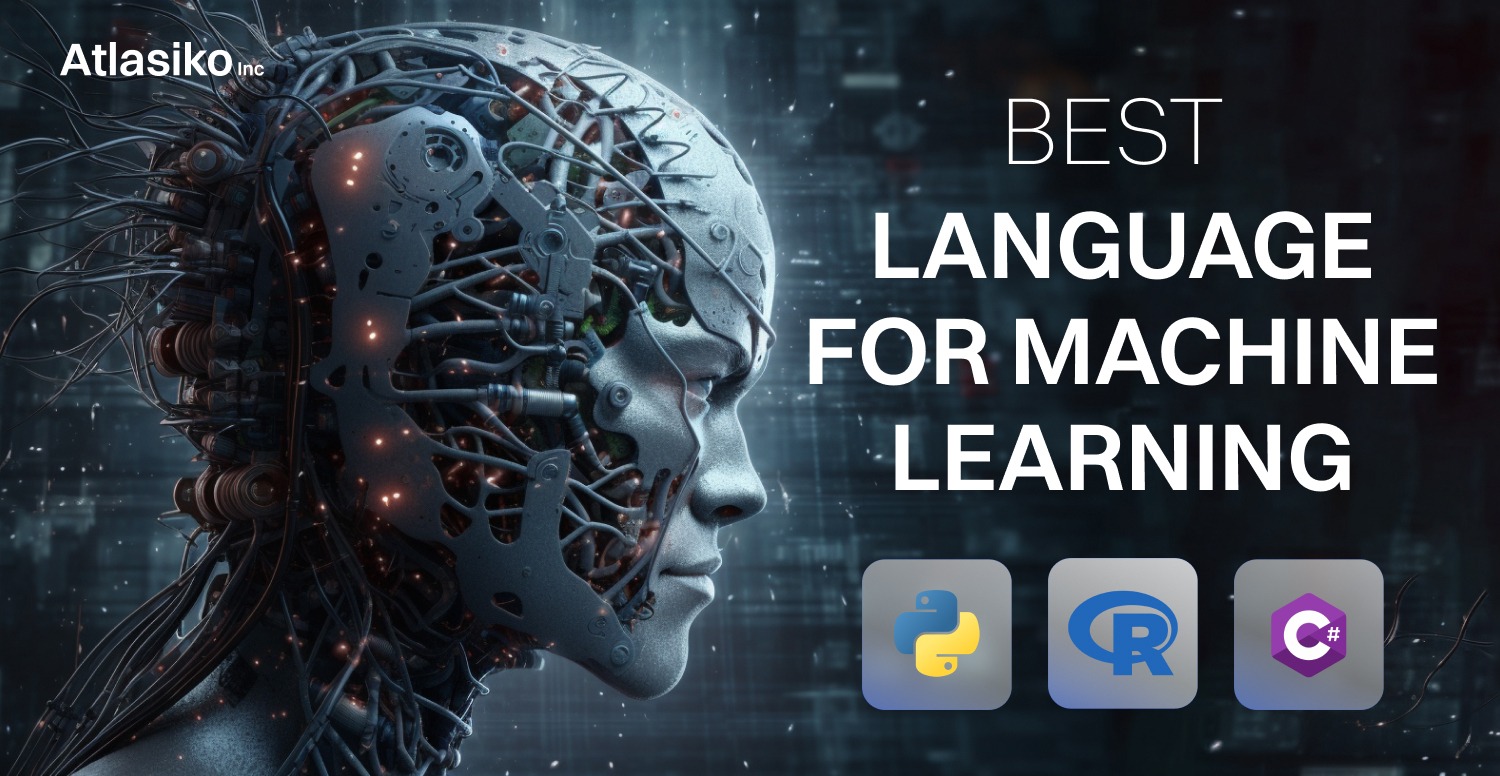


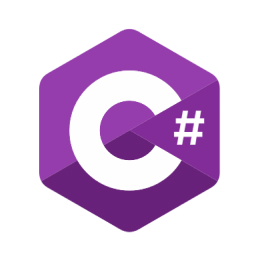


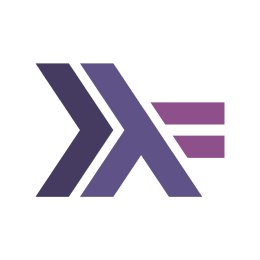
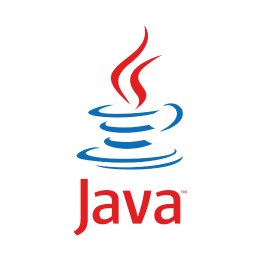
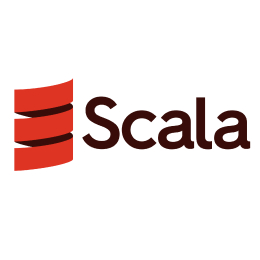






nice article
Thank you!
Thank you for your comment!